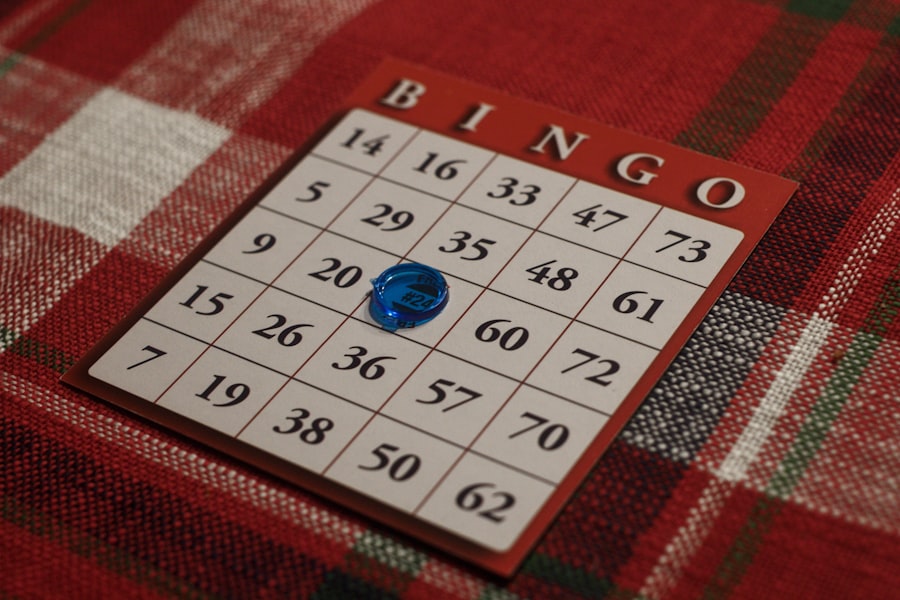Unleash the Fun: The Ultimate Guide to Bingo
Description
Bingo has a rich and varied history that traces back to the 16th century in Italy, where it originated as a lottery game known as “Lo Giuoco del Lotto d’Italia.” This early version of the game involved players selecting numbers from a pool, and it quickly gained popularity across Europe. By the 18th century, the game had made its way to France, where it was played in a similar manner but with a more structured format. The French version of the game was called “Le Lotto,” and it was primarily enjoyed by the upper classes.
The game continued to evolve, and by the 19th century, it had crossed the English Channel, where it became a favorite pastime among the British. The modern version of bingo that we recognize today began to take shape in the United States during the 1920s. It was initially known as “Beano,” a name derived from players using beans to mark their cards.
The game gained traction at fairs and carnivals, where it was played for small prizes. However, a pivotal moment occurred when a New York toy salesman named Edwin S. Lowe introduced the game to a wider audience.
In 1929, Lowe’s game was rebranded as “Bingo,” and it quickly became a sensation across the country. The game’s popularity surged during the Great Depression, as it provided an affordable form of entertainment for many families.
Key Takeaways
- Bingo originated in Italy in the 16th century and has evolved into a popular game played worldwide.
- To play bingo, players purchase cards with random numbers and mark off numbers called by a bingo caller.
- To increase chances of winning, players should arrive early, play multiple cards, and choose cards with a variety of numbers.
- Variations of bingo include 75-ball, 80-ball, and 90-ball bingo, each with different card layouts and winning patterns.
- The best places to play bingo include local bingo halls, online bingo sites, and community centers, offering a variety of experiences for players.
How to Play Bingo
Playing bingo is straightforward, making it accessible to individuals of all ages. The game typically involves players receiving cards that contain a grid of numbers arranged in rows and columns. The most common format is a 5×5 grid, with each column representing a letter in the word “BINGO.” The center square is often marked as a free space.
A caller randomly selects numbers from a pool, usually ranging from 1 to 75 or 1 to 90, depending on the variation being played. As numbers are called out, players mark them on their cards if they appear. The objective of bingo is to complete a specific pattern on your card before anyone else does.
Common winning patterns include horizontal lines, vertical lines, diagonal lines, or even more complex shapes like letters or full-card fills. Once a player achieves the required pattern, they shout “Bingo!” to alert the caller and other players. The game pauses while the winning card is verified, ensuring that the player has indeed marked the correct numbers.
If confirmed, that player wins a prize, which can range from small tokens to substantial cash rewards, depending on the venue and stakes involved.
Tips and Tricks for Winning at Bingo

While bingo is largely a game of chance, there are strategies that players can employ to enhance their odds of winning. One effective approach is to play with multiple cards simultaneously. By increasing the number of cards in play, players can cover more numbers and improve their chances of completing a winning pattern.
However, managing multiple cards requires focus and quick reflexes, so it’s essential to find a balance that works for individual comfort levels. Another useful tip is to choose less crowded games or sessions. In bingo halls or online platforms, games with fewer participants mean less competition for prizes.
This can significantly increase the likelihood of winning since there are fewer players vying for the same patterns. Additionally, players should familiarize themselves with the specific rules and variations of the game being played, as different formats may have unique winning patterns or prize structures. Understanding these nuances can provide an edge over less informed competitors.
Different Variations of Bingo
| Variation | Number of Players | Card Layout | Winning Pattern |
|---|---|---|---|
| 75-Ball Bingo | Multiple | 5×5 grid with center square as “Free Space” | Various patterns including lines, shapes, and blackout |
| 90-Ball Bingo | Multiple | 9×3 grid with 15 numbers | 1 line, 2 lines, full house |
| Speed Bingo | Multiple | 3×3 grid with 9 numbers | Single line |
Bingo has evolved into numerous variations that cater to diverse preferences and gaming environments. One popular variant is 75-ball bingo, commonly played in North America. In this version, players use cards with a 5×5 grid filled with random numbers ranging from 1 to 75.
The objective is to complete specific patterns called out by the caller. Another widely recognized variant is 90-ball bingo, predominantly played in the UK and Australia. Here, players use cards with three rows and nine columns, with each row containing five numbers and four blank spaces.
The game typically has two main prizes: one for completing a single line and another for filling all three lines. Other exciting variations include speed bingo, where numbers are called at an accelerated pace, and themed bingo games that incorporate popular culture references or seasonal themes. Online platforms have also introduced innovative twists on traditional bingo, such as virtual bingo rooms with interactive features and live-streamed games hosted by charismatic callers.
These variations not only keep the game fresh but also attract new audiences who may be looking for something beyond the classic format.
The Best Places to Play Bingo
When it comes to finding the best places to play bingo, options abound both in-person and online. Traditional bingo halls remain popular venues where players can enjoy the social atmosphere while competing for prizes. Many cities have dedicated bingo establishments that host regular games with varying stakes and themes.
These venues often provide amenities such as food and drink services, making them ideal for social gatherings or family outings. For those who prefer the convenience of playing from home, online bingo platforms have surged in popularity in recent years. Websites and mobile apps offer a wide range of games with different formats and prize structures.
Players can join virtual rooms where they can interact with others through chat features while enjoying the thrill of gameplay from their own devices.
Bingo Etiquette: Do’s and Don’ts

Do’s for a Smooth Game
Arriving on time for bingo games is essential to ensure a pleasant experience for all participants. This allows players to settle in, familiarize themselves with the rules, and get comfortable before the game begins. Additionally, maintaining a reasonable noise level during gameplay is crucial to respect fellow players and avoid distractions.
Don’ts to Avoid Distractions
While excitement is natural when playing bingo, there are certain behaviors to avoid. Excessive shouting, talking, or engaging in side conversations can disrupt others’ concentration and spoil the fun. It’s impolite to talk excessively during gameplay or distract others with unnecessary conversations.
Respecting Fellow Players
Players should respect each other’s personal space and belongings. Refrain from touching other players’ cards or equipment without permission, as this ensures everyone feels comfortable and respected in the gaming environment. Lastly, when someone calls out “Bingo!”, allow them their moment of glory without interruption until their win is verified.
Bingo Lingo: Understanding the Terms and Calls
Bingo has its own unique lexicon that enhances the gaming experience and fosters camaraderie among players. Familiarizing oneself with bingo lingo can make gameplay more enjoyable and engaging. For instance, when numbers are called out by the caller, they often use phrases like “two little ducks” for 22 or “knock at the door” for 4.
These catchy phrases add an element of fun and anticipation to each call. In addition to number calls, there are terms related to gameplay itself that players should know. For example, “daubing” refers to marking off numbers on a bingo card using a dauber or marker.
A “full house” signifies that a player has marked all numbers on their card, which typically results in a larger prize than completing just one line or pattern. Understanding these terms not only helps players follow along but also fosters a sense of community among those who share a passion for the game.
The Social Benefits of Playing Bingo
Beyond its entertainment value, playing bingo offers numerous social benefits that contribute to overall well-being. One significant advantage is its ability to bring people together in a communal setting. Whether in a bingo hall or an online platform, players often form connections with others who share similar interests.
This social interaction can combat feelings of loneliness and isolation, particularly among older adults who may seek companionship. Moreover, bingo serves as an excellent icebreaker for new friendships or social groups. The game’s relaxed atmosphere encourages conversation and laughter among participants, creating an inclusive environment where everyone feels welcome.
Additionally, many bingo events are organized as fundraisers for charitable causes or community initiatives, allowing players to contribute positively while enjoying their favorite pastime. This sense of purpose further enhances the social experience associated with playing bingo, making it more than just a game but rather a means of fostering connections within communities.
FAQs
What is bingo?
Bingo is a game of chance in which players mark off numbers on cards as the numbers are drawn randomly by a caller. The first player to mark off a predetermined pattern of numbers wins the game.
How is bingo played?
Players are each given a bingo card with a grid of numbers. A caller randomly selects numbers and announces them to the players. Players mark off the numbers on their cards, and the first player to complete a specific pattern (such as a line, four corners, or blackout) wins a prize.
What are the common variations of bingo?
Common variations of bingo include 75-ball bingo, 90-ball bingo, and speed bingo. Each variation has its own rules and patterns for winning.
Where is bingo commonly played?
Bingo is commonly played in dedicated bingo halls, community centers, and online. It is also a popular game at fundraisers, social events, and retirement communities.
Is bingo considered a form of gambling?
Bingo is often considered a form of gambling, as it involves the risk of losing money in hopes of winning a prize. However, in some jurisdictions, bingo is exempt from gambling laws due to its charitable and social nature.
What are the potential benefits of playing bingo?
Playing bingo can provide social interaction, cognitive stimulation, and entertainment. It is also commonly used as a fundraising activity for charitable organizations.





